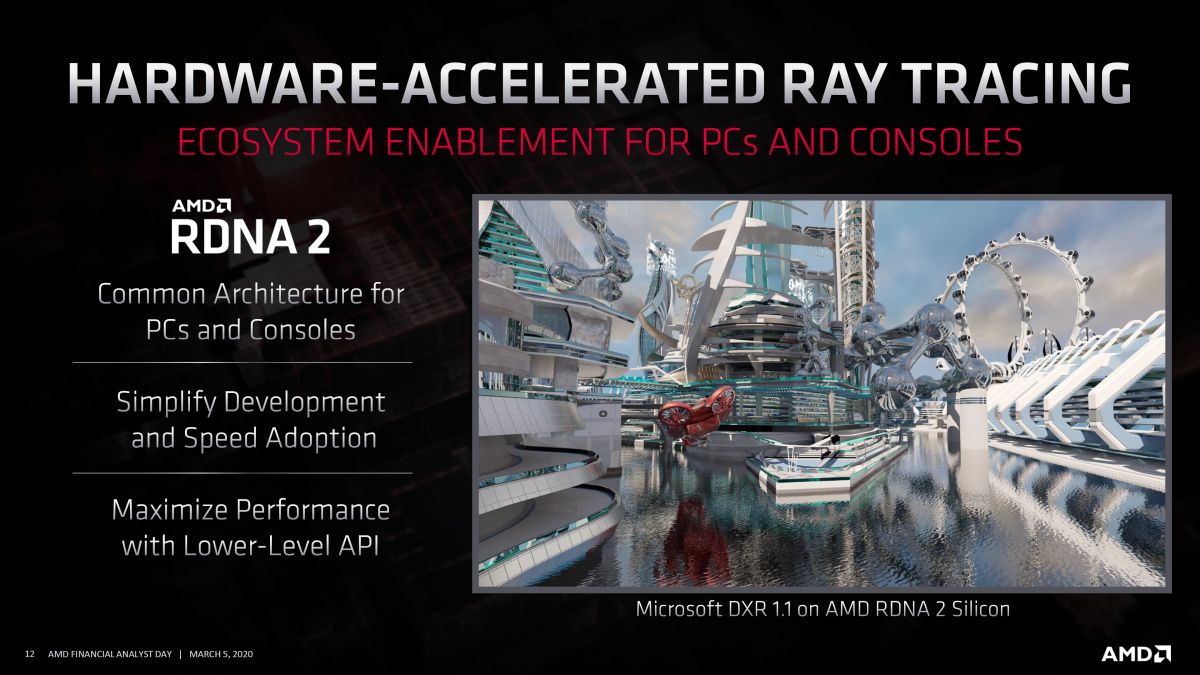Referred to as Navi 2X, RDNA2 will still be based on AMD’s 7nm die lithography, and almost certainly with an improved version of the process node. On paper, AMD says that the unreleased GPU architecture will have a 50% improvement in performance-per-watt, better power efficiency. Comparable to an enthusiast-class, high-end graphics card. Which brings us to the next point. In the next slide, AMD says that Navi 2X, will support hardware-based ray-tracing and Variable Rate Shading. Both features aren’t technically new to the table, specifically because they were initially announced during Microsoft’s own Xbox Series X announcement.
This is still an important announcement for AMD, though, since neither of its current Navi-driven Radeon RX 5700 series, 5600 XT, or 5500 XT graphics cards is baked with ray-tracing hardware, nor are they able to pull the feat off on a software level. Having such hardware built into next-generation Navi 2X will also put on even ground with NVIDIA’s own Turing-powered GeForce RTX cards, as well as give the latter GPU brand a run for its money. Sadly, AMD did not provide a specific availability date for the GPU, but word is that such an enthusiast-level graphics may pop up sometime this year. Assuming it does, such an announcement would be a nice surprise, especially for AMD Radeon supporters who have long been waiting for an RDNA2-powered Radeon GPU that could take on NVIDIA’s own ray-tracing capable offerings. (Source: AMD, Hot Hardware)
